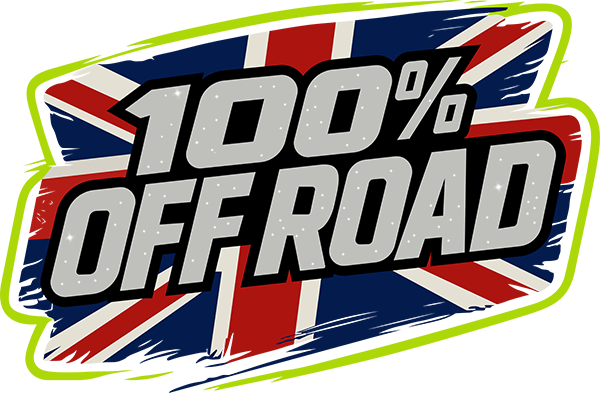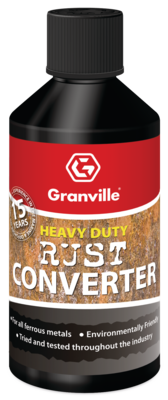GRANVILLE RUST CONVERTER 250ml HEAVY DUTY, WATER BASED
Wear protective gloves, protective clothing, eye protection & face protection
Granville Rust Converter is a co-polymer latex combined with organic chelating agents designed for application to corroded ferrous substrates. Rust Converter actively converts the rust present on the substrate into a stable organic iron complex. As the polymer dries it forms an impermeable barrier to oxygen and moisture effectively sealing out any further corrosion. Rust Converter has an extremely low order of toxicity and does not contain phosphoric acid or lead. Rust Converter exhibits excellent resistance to acid and alkali splashes. Contact with aliphatic or aromatic solvents will cause softening of the
film which will recover.
PRODUCT USAGE
Granville Rust Converter has been successfully used on the following applications:- automotive shells and chassis, ships ballast tanks, steel bridges, brine tanks, harbour installations, lamp posts, oil rigs, railings, sewage treatment works, storage tanks, structural girders and railway vehicles
DIRECTIONS FOR USE
Wire brush the substrate to remove loose flaking paint and rust. Remove any high surface peaks by abrading then wash the substrate with detergent to remove oil and grease. Surfaces should then be cleaned using high pressure water wash to remove the detergent and any corrosion salts. Do not remove all traces of rust as the presence of rust is necessary for a complete chemical reaction of Rust Converter.
It is recommended to carry out an initial test area at all times. This test should take place in the working conditions of application. The topcoat system should also be tested for compatibility. Stir product thoroughly before use and decant sufficient material for the operation into a suitable non-metallic container. To avoid contamination do not pour any unused material back into the original bulk container. Apply a minimum of two coats by brush, spray or roller to a wet film thickness of 60-90um per coat (20 – 30um DFT).
Brush: Application by brush is preferred for the first coat to ensure full penetration when the substrate is heavily rusted.
Roller: Use a short nap roller and apply the coating evenly – edges may need to be stripe coated by brush to ensure the substrate is completely coated.
Spray: The coating may be applied by air assisted or airless spray techniques with typical gun settings as follows: Airless Spray Air assisted (syphon or pressure fed)
100 – 130Kg/cm2 tip pressure 3.5 – 4Kg/cm2 air pressure
250 – 400 um tip 250- 400 um tip
40 – 60 degrees fan 40 – 60 degrees fan
Atmospheric Conditions:
External: An air temperature of 5 – 30oC is preferred. Avoid applying if relative humidity is greater than 80% or when there is a risk of rain or condensation during the drying period.
Internal: Ensure air movement is available to remove excess moisture during the drying process. Immerse brushes, rollers or spray tips in clean water during work breaks to prevent drying. Use water to clean equipment before product dries. To remove dried dried coating use lacquer thinner or aromatic solvent. Thinning: If required, use a little de-mineralised water, but no more than 10%. If applying a primer, use a white spirit based product and apply a small area first to check compatibility..
NOTE:
If medical advice is needed, have product container or label at hand. Keep out of reach of children. Keep away from heat, hot surfaces, sparks, open flames and other ignition sources. No smoking. Wear protective gloves/protective clothing/eye protection/face protection. IF ON SKIN (or hair): Take off immediately all contaminated clothing. Rinse with water. IF IN EYES: Rinse cautiously with water for several minutes.
General shipping delivery text
Form



